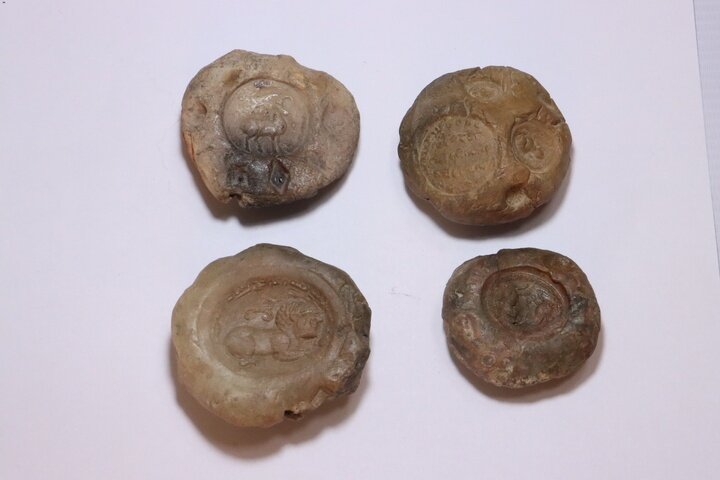Ancient clay seals restored, documented

TEHRAN – A collection of ancient clay seals bearing various themes, from realistic characters to mythical animals has recently been restored and documented in Semnan province.
The seals, which are being kept at Shahrud Museum, were completely de-sedimented and the surface pollution and mud behind the works were removed, IRIB reported.
According to restorer, Razieh Taheri, seals of the Shahrud Museum are made of soft clay and are ocher and pea red in color, and on them, there is a large stamp in the center and one or more smaller stamps around.
“The motifs depicted on these beads range from naturalistic characters to images of mythical animals, symbols and signs…. and leather strips can be seen behind them.”
Seals are considered important legal documents in all historical periods and play a significant role in recognizing and reconstructing historical, political, administrative, cultural, and social situations, the expert explained.
“A clay seal can represent part of the ownership or control and inspection of government officials and convey important information about power structures to its audience.”
The restorer, however, did not mention the date or historical periods associated with the clay seals.
According to Iranica, the seals of the eastern Iranian area reflect the composite nature of the region’s culture. On the one hand, this is characterized by the various local traditions and their contacts with South and East Asia and the Hellenistic world; on the other hand, there is the link with the Iranian plateau and its craft traditions, exposed to the influence of the Iranian dynasties from the Achaemenians to the Sasanians that held power in western Asia.
The technique of engraving semi-precious stones with drills and emery flourished in Mesopotamia and the Mediterranean basin in pre-Classical and Classical times, giving rise, on the one hand, to the tradition of Mesopotamian seals, stamps, and cylinders, in all their chronological and regional variants, and on the other to the production of intaglios, those refined engraved gems of the Greek and later the Hellenistic World. Other, local traditions of seals in metal or terracotta developed in some regions of the area, including Central Asia. On the whole, therefore, it is easier to follow the development of the various groups of seals than it is with other craft classes.
The Iranian world, beginning with the glyphics of the Achaemenian period, recalls both the Mesopotamian and the Greek traditions, with the Achaemenian cylinders on one side and the so-called Greco-Persian gems on the other. In the Arsacid and Sasanian periods, local glyptic production was introduced from the Mesopotamian stamp seals of the Achaemenian and Seleucid periods. We also see some intaglios of Hellenistic tradition, probably imported.
AFM
Leave a Comment